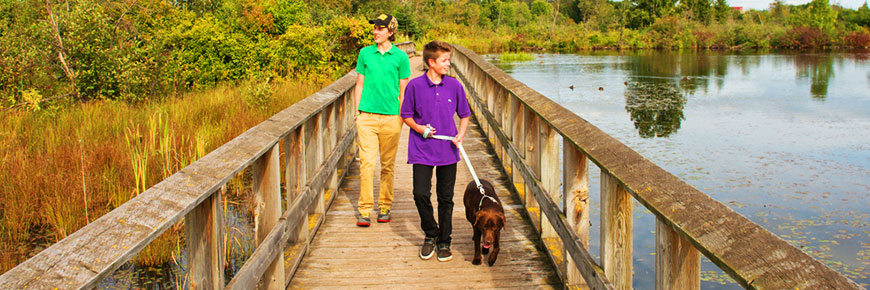
Dogs on leash
Sault Ste. Marie Canal National Historic Site
Dogs and the great outdoors are a match made in heaven; but did you know that our companion animals can unintentionally stress or harm wildlife when they run off-leash? That is why dogs must be on a leash and under control at all times in our protected areas.
Dogs on leash – it is the law!
It doesn’t matter how well-behaved your dog is; when visiting a national park or national historic site they must be on a leash and under control at all times.
This isn’t just to protect the wildlife, it is also to protect you and your dog and the public. Wildlife are unpredictable; an off-leash dog can trigger aggressive behaviour from predators like bears and foxes. Predators see free-running, off-leash dogs as competition or prey, and may either attack the dog, or track the dog back to its owners or other people.
After repeat encounters with off-leash dogs, wildlife lose their natural wariness of humans and become a public safety risk.
Did you know?
- Off-leash dogs disturb wildlife resulting in dogs and/or people being injured or killed on the trail.
- Dogs can disturb, injure or kill birds and small animals, including species at risk.
- Off-leash dogs are a very common cause of wildlife incidents in our protected areas.
Guidelines when bringing your dog to a national park or national historic site
- Keep your dog on leash at all times – it is the law.
- Pick up and dispose of your dog's waste in a garbage bin.
- Give wildlife the space they need.
- Ensure your dog does not attack, harass or chase a person, animal or vehicle.
- Select suitable activities and terrain that align with your and your dog’s abilities.
- Check for area closures, trail restrictions, and for updates on wildlife activity by visiting the park website or a Parks Canada Visitor Centre.
- Consider leaving your dog at home if you plan to camp, hike or go into the backcountry.
- Date modified :